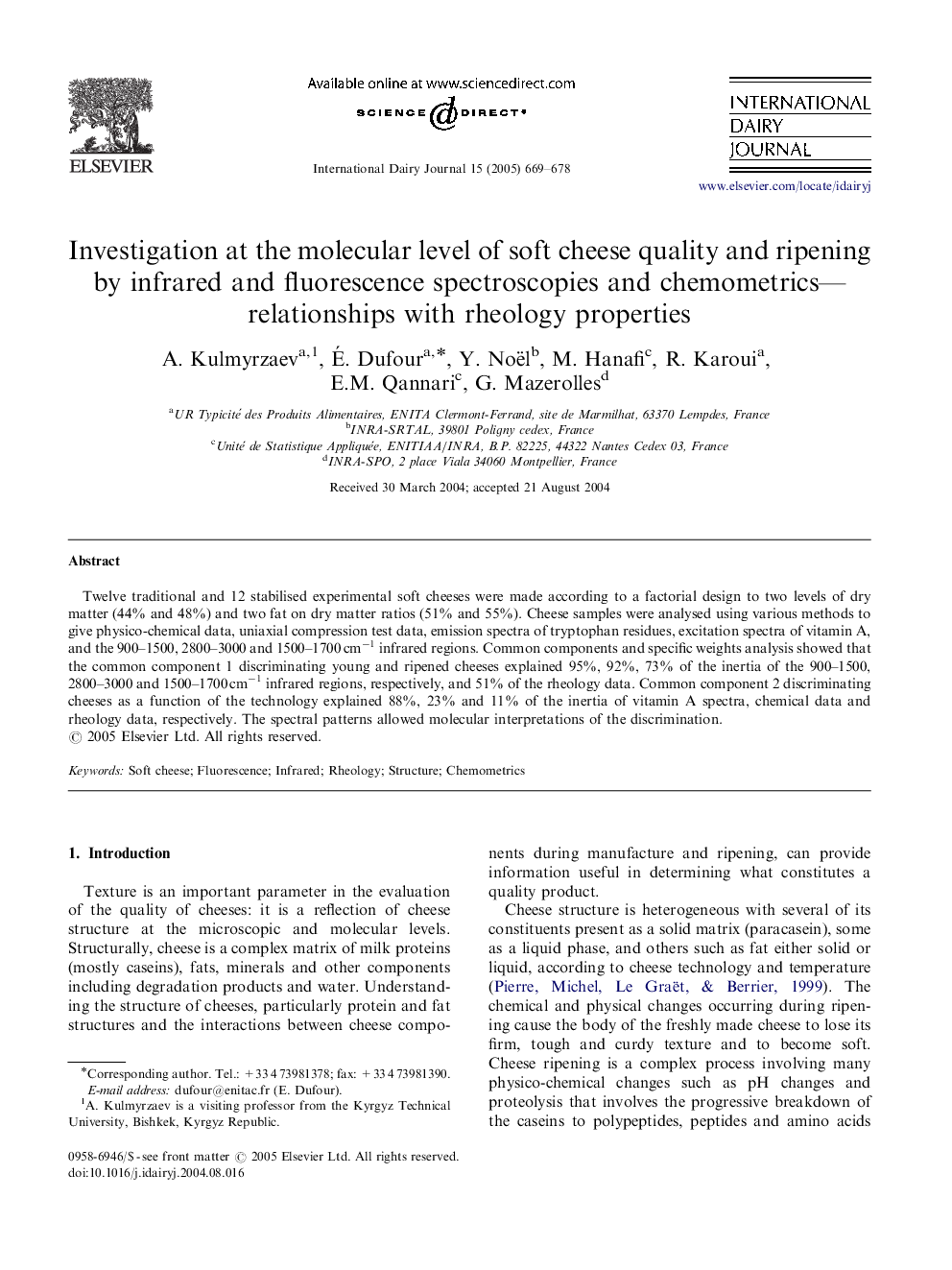| Article ID | Journal | Published Year | Pages | File Type |
|---|---|---|---|---|
| 8979031 | International Dairy Journal | 2005 | 10 Pages |
Abstract
Twelve traditional and 12 stabilised experimental soft cheeses were made according to a factorial design to two levels of dry matter (44% and 48%) and two fat on dry matter ratios (51% and 55%). Cheese samples were analysed using various methods to give physico-chemical data, uniaxial compression test data, emission spectra of tryptophan residues, excitation spectra of vitamin A, and the 900-1500, 2800-3000 and 1500-1700Â cmâ1 infrared regions. Common components and specific weights analysis showed that the common component 1 discriminating young and ripened cheeses explained 95%, 92%, 73% of the inertia of the 900-1500, 2800-3000 and 1500-1700Â cmâ1 infrared regions, respectively, and 51% of the rheology data. Common component 2 discriminating cheeses as a function of the technology explained 88%, 23% and 11% of the inertia of vitamin A spectra, chemical data and rheology data, respectively. The spectral patterns allowed molecular interpretations of the discrimination.
Related Topics
Life Sciences
Agricultural and Biological Sciences
Food Science
Authors
A. Kulmyrzaev, Ã. Dufour, Y. Noël, M. Hanafi, R. Karoui, E.M. Qannari, G. Mazerolles,
